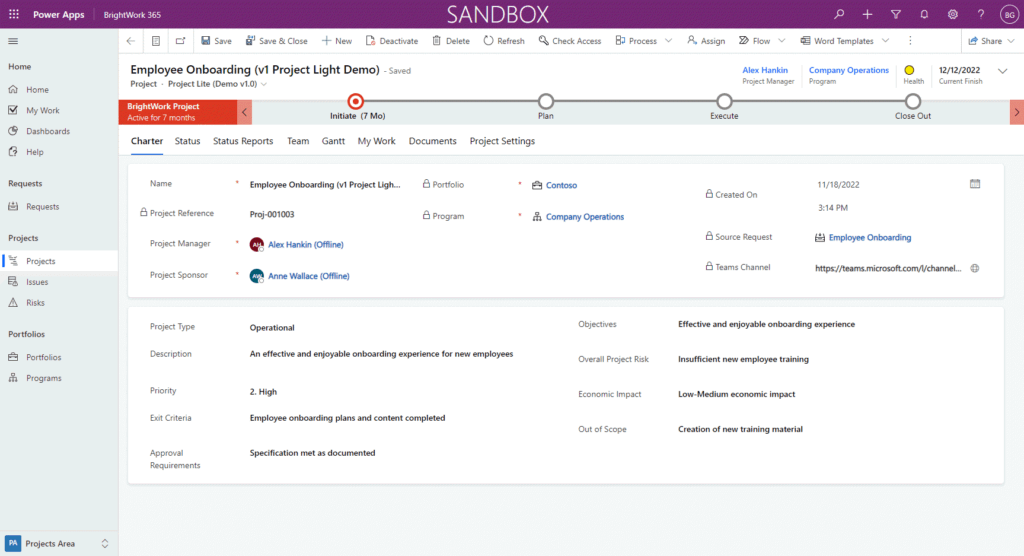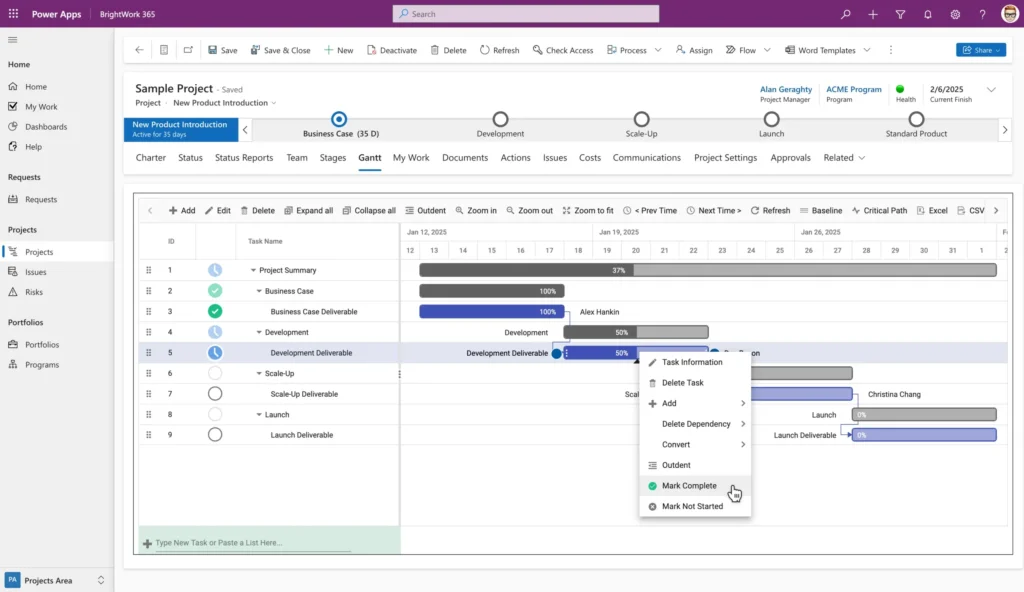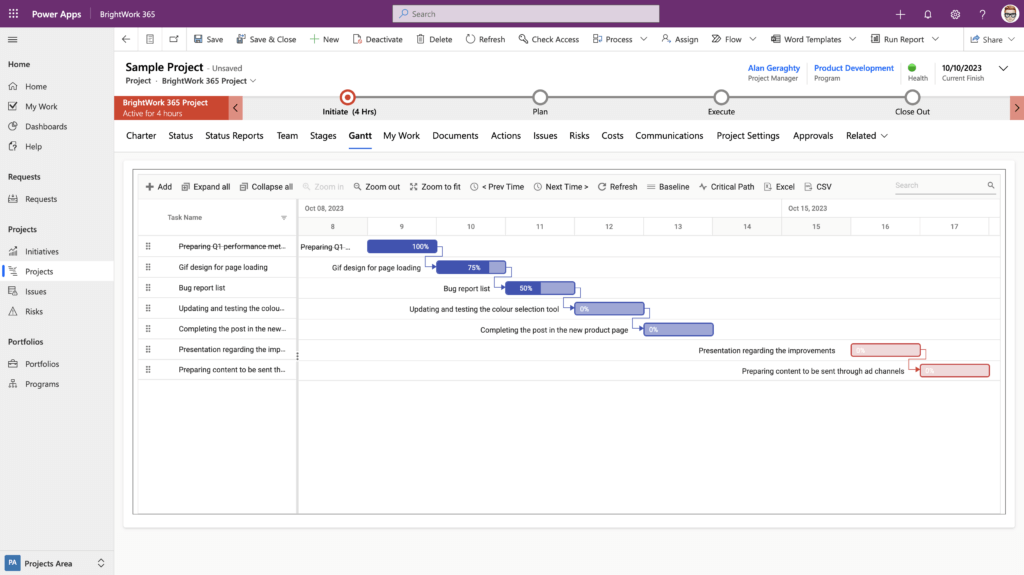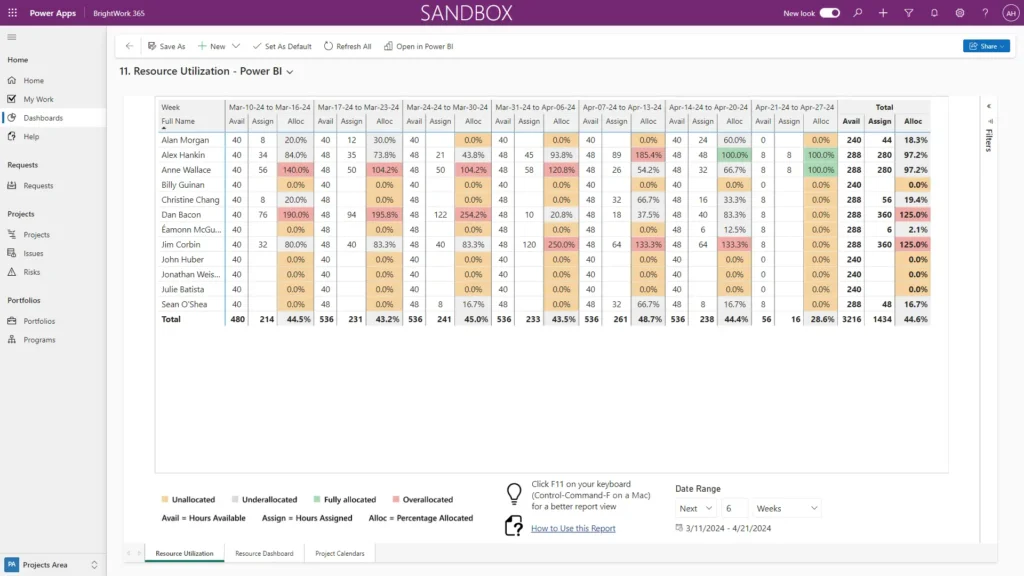Planning your project schedule and timelines is no easy feat, but getting the plan as right as possible before work commences is vital.
After all, the plan will help you allocate resources, provide a baseline for performance management, and enable tracking as the project progresses.
Once you have a well-considered plan, you also need to work hard to ensure your team sticks to it. This article outlines a 10-step planning process and eight tips for helping your team maintain the schedule.
10 Steps for Developing Your Project Plan
Using a project plan template ensures smooth project execution, proper task management, and on-time completion. A structured project timeline helps allocate resources, set realistic milestones, and track progress throughout the project life cycle.
1. Gather inputs

Start by reviewing the project statement to understand the scope and goals of the project, resources, stakeholder expectations, and proposed schedules.
If any risks were documented during the project initiation stage, review these risks so you can decide how much contingency to include in your schedule.
Next, check in with the proposed team to figure out who is responsible for the deliverables, required project tasks and phases, and the expected duration of key tasks or phases.
You should also confirm if team members are working on multiple projects or have any upcoming vacations, as these commitments could reduce availability.
2. Plan milestones and stages

With this information, you can plot key milestones and project activities. Setting milestones in a project calendar is a useful way to track project progress and help to keep the team motivated.
Working towards smaller project goals is much more realistic and manageable than striving for a final end date with no checkpoints along the way.
3. Work Breakdown Structure

Start with a clear overview of the project deliverables, tasks, and milestones to develop your work breakdown structure. Then, break down the entire project into smaller tasks, managed in chunks of time, for example, two weeks.
Assign one owner to each task. This improves accountability and resource management as you can quickly check if a task is too big for one person. If any task doesn’t make sense, now is a good time to check with the task owner or project stakeholder!
Depending on the level of detail in the WBS, you may prefer just to use the document with your team and present a high-level timeline to project stakeholders.
4. Outline tasks
Next, develop an outline schedule for all tasks. If you are using project scheduling software, check the options for developing and updating a schedule.
When plotting tasks, pay particular attention to any dependencies between tasks and between milestones.
A project dependency arises when a task, milestone, or activity is dependent on another task or milestone being completed before it can start or be completed.
There are four key dependency types to look for:
Mandatory Dependencies
These are dependencies that are logic-driven, e.g., a code module cannot be tested until it’s written.
Resource-based Planning Dependencies
These tasks could be accomplished faster or sooner if you had more resources.
Discretionary Dependencies
These tasks could be scheduled differently, but the project manager has opted for this schedule.
External Dependencies
These are dependencies outside the control of the project team but must be reflected in the project schedule.
An example of an external dependency is the completion of a project milestone linked to the completion of a milestone within another project.
Using a project Gantt chart is a useful way to spot and address dependencies. In this video, you’ll see how to plan and manage the timeline using the Gantt chart in BrightWork 365.
How to Create an Effective Project Schedule
It’s also a good idea to develop a ‘dependency log’ to record and track information such as the project name, task description, and expected timelines.
5. Develop the critical path

Critical Path action available from the Gantt toolbar 1
The critical path charts one path through all tasks and is used to determine the fastest route to finishing the project. It’s essential to managing the execution of the project and reducing scope creep.
To develop the critical path, look at the duration and earliest and latest start and end dates for tasks, and any dependencies.
6. Estimate resources

After gathering some estimates from the team, compare these with the critical path and WBS to confirm resource availability.
Elements to check include:
- Conflicting project allocation using personal calendars or a resource allocation report in your project management software.
- Commitment to non-project activities.
- Personal vacations and national holidays.
- Dedicated hours to complete a task the actual timeframe when combined with other responsibilities.
- Team skills and capabilities.
- Any requirements for outsourcing deliverables.
7. Document risks
During the project initiation phase and planning phases, you will likely encounter project risks, such as task dependencies or competing resource allocation.
Revisit and document these risks along with any assumptions that could negatively influence the timelines. For example, how long will it take senior stakeholders to provide critical feedback?
Use this information to add some contingency for dealing with delays, for example, an additional 20% to the overall timeline.
If unsure about the risks or the appropriate contingency to add, look at records and reports from similar projects completed within your organization.
8. Create a Project Schedule
At this point, you have:
- Documented tasks, estimated durations, and project milestones.
- Developed the work breakdown structure with tasks and owners.
- Identified dependencies using an initial schedule.
- Designed the critical path.
- Estimated resources.
- Noted risks and assumptions.
Using this information, plot the schedule for your project requirements and assign tasks to your team!
9. Review and adjust with your team
It’s important to step back and review your plan with the team to check for any errors or adjustments needed.
Depending on the schedule and stakeholder expectations, you may need to deal with the triple constraints of time, quality, and cost. Consider the following questions:
- Do dates match with resource allocation?
- Does every task have an owner?
- Is this the best person for the work?
- Have you allowed enough contingency time for risk management?
- Will you meet the agreed deadline by sacrificing quality or acquiring extra resources?
- Is it possible to deliver less but to the desired standard?
You and the team should decide where to trade off now or later and document these decisions.
10. Periodic Review
Once the project is underway, you will inevitably encounter unexpected delays and disruptions to your schedule. Set aside some time to review and adjust the plan periodically.
Your project management tool should make it relatively easy to make these updates and communicate the changes with your team using automated reminders or a project dashboard.
Any significant revisions should be agreed upon with project stakeholders to keep everyone in the loop.
8 Ways to Help Your Team Stick to the Schedule
Despite best intentions, your team will struggle to stay on schedule. Here are a few suggestions to avoid too much deviation from the timelines and ensure a successful project!
- Assess your team’s strengths and weaknesses so you can assign people to the right tasks.
- Set goals with realistic timelines and manageable chunks of work.
- Host a kick-off meeting to ensure the team understands the plan before starting the project.
- Use collaboration tools for real-time communication, tracking, and reporting.
- Celebrate milestones!
- Limit the number of tasks allocated to a team member at any time to encourage deep-focus work and high-quality results.
- Set a feasible meeting schedule with your team, and make sure these meetings start and end on time.
- Ensure accountability by explaining how you will address missed deadlines with relevant team members.
Optimize Your Timelines with BrightWork 365
These 10 steps we’ve outlined will help you create a plan that allocates resources, sets milestones, and tracks project progress. Remember that regular reviews keep the project on track despite disruptions – so don’t forget to review!
Simplify project management with tools like Gantt charts and dependency logs using BrightWork 365. Ready to streamline your schedules? Contact us today to learn more.
